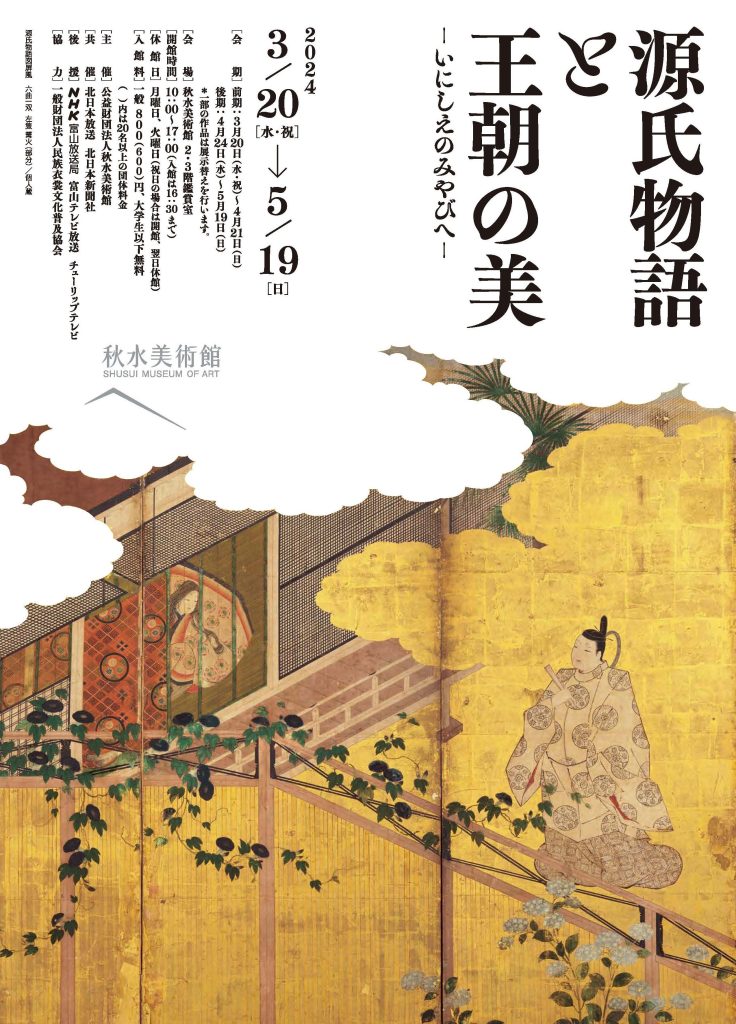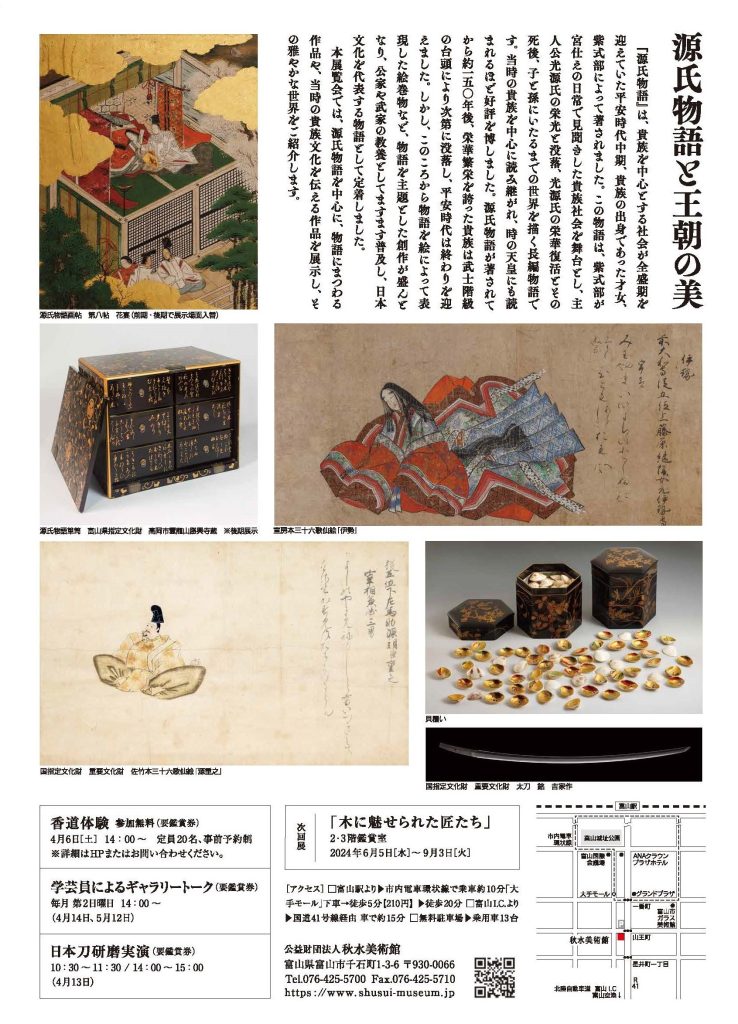The Tale of Genji was written by Murasaki Shikibu, a talented woman from a high ranking family, during the mid-Heian period, at the height of aristocratic society. This story is set in the aristocratic world that Murasaki Shikibu saw and heard in her daily life as a palace lady-in-waiting. It is a long tale depicting the glory and fall of the main character, Hikaru Genji, his revival and death, and the lives of his children and grandchildren. It was widely read among the aristocrats of the time, and was so popular that it was even read by the emperor. Approximately 150 years after The Tale of Genji was written, the prosperity of the aristocracy began to decline due to the rise of the samurai class, and the Heian period came to an end. However, beginning around this time, works based on tales, such as scrolls that expressed stories through pictures, became increasingly popular as a form of education for court nobles and samurai families, and came to be important aspects of Japanese culture.
This exhibition will focus on the Tale of Genji, introducing its elegant world by exhibiting works related to the story and works conveying the aristocratic culture of the time.





 Back
Back